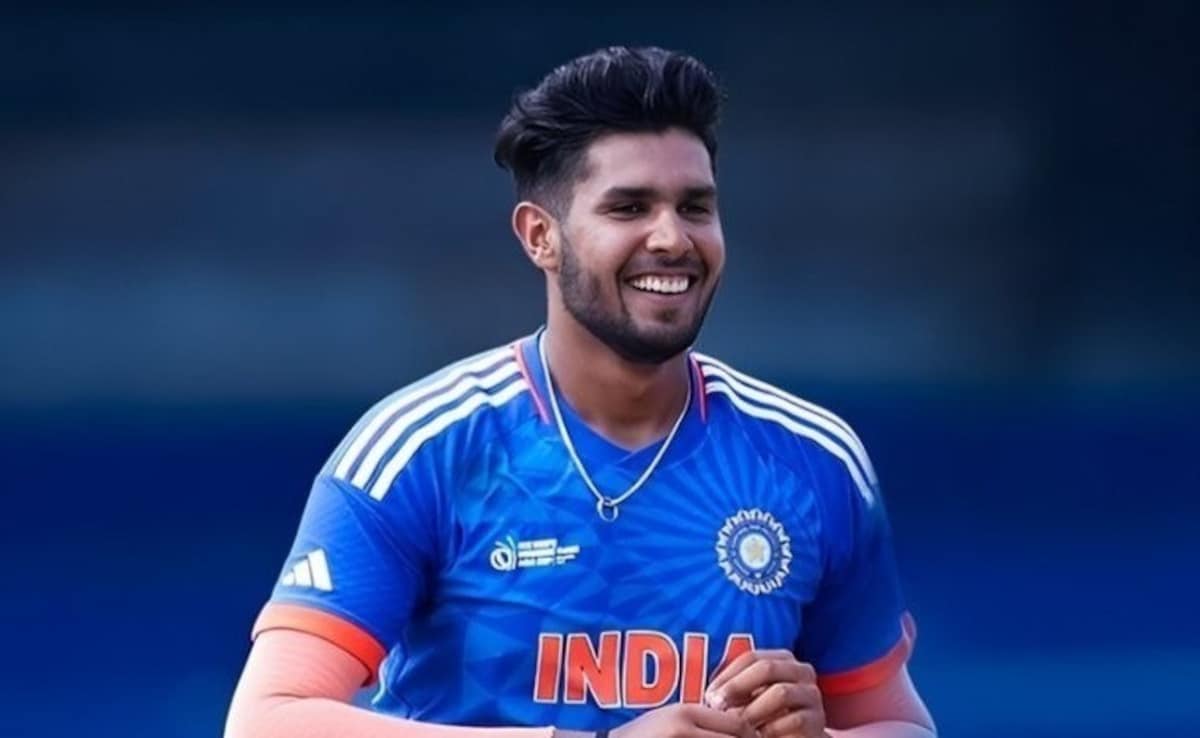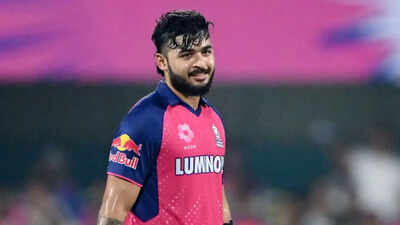Harshit Rana was born on 22 December 2001 in Ghevra, near the Delhi–Haryana border in India. Growing up in a modest environment, he was encouraged by his family, especially his father Pradeep Rana, who was a former hammer thrower and weightlifter with the CRPF. This athletic background in the family likely helped Harshit develop early physical strength and discipline. He studied at Ganga International School in New Delhi. Around the age of 10, he started formal cricket training under coach Shravan Kumar, who helped shape his early development in pace bowling. From childhood, Harshit showed strong interest in fast bowling, working on his pace, run-up, and ability to deliver under pressure.
Domestic / IPL Career
Before playing senior domestic cricket, Harshit Rana was noticed through age-group and local circuits in Delhi. His break in franchise cricket came when Kolkata Knight Riders (KKR) signed him as a replacement player in the IPL 2022 season (for an injured Rasikh Salam). Though his appearances in 2022 were limited, KKR retained faith in his abilities. He made his List A debut for Delhi the same year, followed by his first-class debut in the Ranji Trophy. He began to gain more attention during the 2023 season, especially in domestic red-ball cricket, where he claimed good numbers of wickets and showed promise. In the IPL 2024, Harshit had a standout season, taking 19 wickets for KKR, becoming one of their top bowlers and significantly contributing to their success.
International Debut & Progression
Harshit Rana’s consistent domestic performances led to his inclusion in India’s international squads. He made his Test debut for India in the first Test of the 2024-25 Border-Gavaskar series vs Australia in Perth on 22 November 2024. Shortly afterwards, he made his T20I debut on 31 January 2025 against England in Pune—this was notable because he came into the match as a concussion substitute, an uncommon circumstance. He followed this with his ODI debut on 6 February 2025 vs England. In all three formats, he made an immediate impact by picking up at least three wickets on debut, a rare feat. These debuts showed his ability to adapt quickly to different conditions and formats on the international stage.
Playing Style & Strengths
Harshit is a right-arm fast bowler known for his raw pace, ability to generate bounce, and willingness to bowl attacking lines. He is tall (around 6 ft 2 in), which helps him extract bounce from the pitch, an asset especially in conditions that assist fast bowlers. He has shown he can bowl in different phases—new ball, middle overs, even in the death overs. Though his primary role is bowler, he has demonstrated useful lower-order batting potential (notably a quickfire century in the Duleep Trophy from number 9). His temperament, work ethic, and aggression also mark him out; teammates and coaches have remarked upon his willingness to learn and improve.
Key Achievements & Records
Some key milestones in Harshit Rana’s young career:
- Joint-second highest wicket-taker for KKR in IPL 2024, with 19 wickets.
- Scored his maiden first-class century (122 not out off 86 balls) in the 2023 Duleep Trophy, while batting from a lower order position.
- Became the first Indian cricketer to take three wickets on debut in each of the three formats (Test, ODI, T20I).
- First Indian cricketer to make his T20I debut as a concussion substitute, replacing Shivam Dube during the T20I vs England.
Challenges & Criticism
Despite his promising talent, Harshit Rana’s journey has had its share of criticism and challenging moments. In his ODI debut he conceded a particularly expensive over (26 runs) which drew attention. Some pundits have questioned whether he was ready for certain responsibilities, especially in pressure matches, and have scrutinized his consistency. However, these tough phases also reflect the steep learning curve that many fast bowlers face early in international cricket.
Outlook & Future Potential
At his age, Harshit Rana has already made significant strides. His ability to adapt, early success in both franchise and international cricket, and his tall frame with raw pace give him a strong foundation. The key for him will be consistency—maintaining control under pressure, improving line and length, managing workload to avoid injury, and continuing to develop his batting and fielding contributions. If he manages those, he has the potential to be one of India’s dependable pace options in the years to come.








